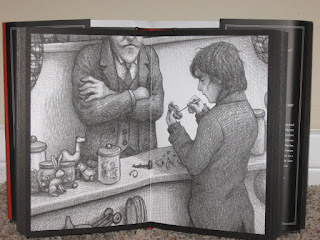One of my great passions is using literature in lesson plans. When I was growing up, all stories were in the language text book, all history came from the history textbook, and all science was from the science textbook. Fortunately for students, much has changed. Students are no longer subjected to only short stories, excerpts from great literature, and stories created to fit into the state standards and that fit within the boxy corners of a textbook.
Children deserve more than contrived literature that looks like it belongs on the back of a cereal box. They deserve excellent literature in every part of the school day. About twenty years ago, the trend for using "real books" came about. Although it has continued to grow in acceptance, there is so much more teachers can do.
Real books are literature--real literature--that students will enjoy, be moved by, and read again and again. A good book is like a friend--you return to it over and over, it moves you, it isn't stagnant but changes as you read it at different stages.
After Disney comes out with a movie, the market is flooded with merchandise using that motif. In book form those Disney stories have cheap paper, colorful but flat and uninteresting illustrations, and boring text. They are there just to tell the retell the story. Although I love Disney and Pixar movies, the blasé books that they develop are an embarrassment to literature.
So how do you know a real book from a blasé book?
1. Real books have reputable authors.
Blasé books often have no author name but just list a publisher. (There are plenty of blasé books that do have authors--either pseudonyms, made up, or entry-level writers.)
2. Real books have beautiful, inspiring illustrations.
Blasé books look like an imitation. They are flat and uninteresting.
3. Real books stand alone.
They are not meant to be a part of some marketing campaign or educational standard.
4. Real books come
before the movies!
Almost always after a movie comes out, a book will follow. These are written quickly, just to capitalize on the timing of the movie's release. Truly blasé.
5. Real books are the ones you remember from your childhood.
Although it is possible, it is very unlikely you remember the books that were take offs on movies or TV shows from your childhood. You probably don't remember much from your language textbook, either. And if you read from Dick and Jane readers (although they are seeing a resurgence for their art's sake), you were definitely NOT moved by the riveting storyline.
The question becomes then, how to incorporate real books into the curriculum. If this is the best of literature and we want our children exposed to quality, not depressing readers, how can teachers use literature inspiringly in their classrooms? The best thing about real books is that they are not intended to teach a curriculum subject, but they can be used to do so!
Real books are being used in the classroom to supplement the content areas. Literature becomes more authentic because students are able to see that stories apply to history, science, and even math! Books like Elinor Pinczes'
One Hundred Hungry Ants and
A Remainder of One (illustrated by Bonnie Mackain), take math concepts like grouping, number sense, and division and show children how fun math can be--They can start to imagine looking at life through math-glasses.
In language, there are beautiful poetry books that help children understand grammar! Ruth Heller is an expert at explaining grammar, even the exceptions to the rules!, in books like
Kites Sail High,
Behind the Mask: A book about prepostions, and
Many Luscious Lollipops: A book about adjectives. Another possibility is using quality children's literature to teach writing concepts like dialogue, characterization, and voice.
In science, teachers and parents can use a book like
The Snowy Day (Keats) to demonstrate concepts like weather, solid-to-liquid, and temperature. It's a real book, and in a very real way it demonstrates those concepts by story.
The best and easiest use of real literature is for history. Studying the Civil War with 4th graders? Choose
My Brother Sam Is Dead. Studying immigration? Try
Esperanza Rising. Looking at the African-Americans struggle during the 20th century?
Roll of Thunder, Hear My Cry will teach more than a lecture can--or certainly make a lecture come to life. These are all novels, but storybooks abound for history, as well.
Fortunately, students aren't stuck just with textbooks anymore. They can see how the concepts they are learning have been lived out or can be interesting and entertaining. This is just one more way to make school relevant to real life!
Pin It

 Many of the plot-driven books are exciting action stories that I have loved: The Giver (#12), The House of the Scorpion (#93), To Kill a Mockingbird (#3).
Many of the plot-driven books are exciting action stories that I have loved: The Giver (#12), The House of the Scorpion (#93), To Kill a Mockingbird (#3).




























